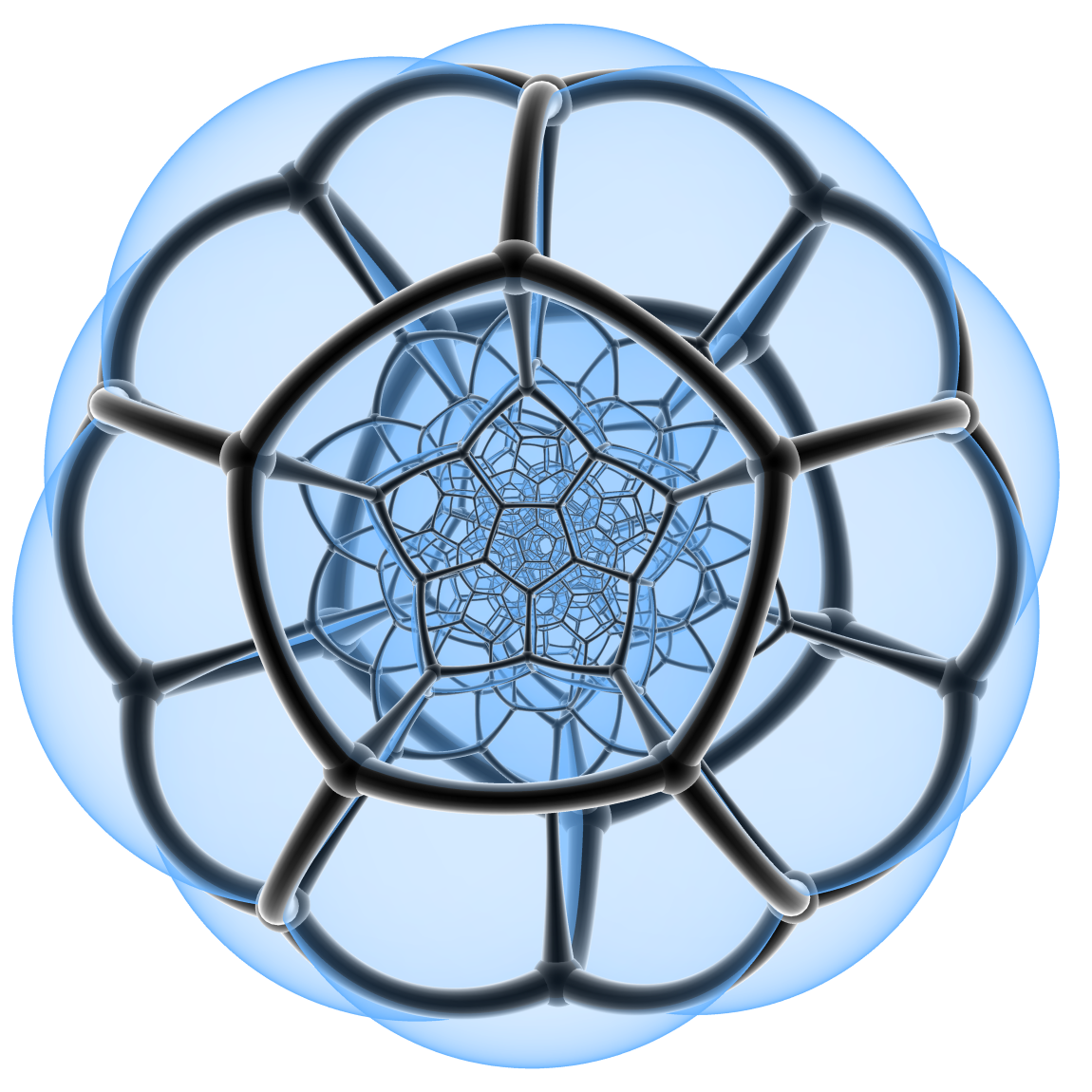Advanced Multivariate Calculus (Math 425.2) Fall 2019
(While under construction, please be patient: more details will follow during the semester.)
Time and Place:
Mondays & Wednesdays 2:30-3:45 in Goessmann 151
Office Hours:
After class (3:45-4:00) Mondays and Wednesdays, starting in Goessmann 151 and migrating up to LGRT 1435G or 1535 (and other times TBA), but in any event, please make an appointment via email: profkusner@gmail.com
Prerequisites:
Multivariable Calculus and Linear Algebra
Recommended Text:
J. Marsden and A. Tromba, Vector Calculus [an earlier edition is fine and may be less expensive: W. H. Freeman, Fifth Edition edition (2003) ISBN-10: 0716749920, ISBN-13: 978-0716749929; or Sixth Edition (2012) ISBN-10: 1-4292-9411-6, ISBN-13: 978-1-4292-9411-9]
H. M. Schey, div, grad, curl and all that [ISBN-13: 978-0393925166; ISBN-10: 039 3925161]
M. Spivak, Calculus on Manifolds [ISBN-13: 978-0805390216; ISBN-10: 0805390219]
Description:
This course covers the basics of differential and integral calculus in many variables: differentiability, directional and partial derivatives and gradient of functions; critical points without or with constraints (Lagrange-multipliers/tangential-gradient) and the Hessian; vector fields and differential forms; divergence, curl and exterior derivative; line- and surface-integrals; the fundamental theorem of calculus (Gauss/Green/Stokes/Thomson). If time and taste permit, topics from physics (fluids and electromagnetism) and differential geometry (curves and surfaces in space) may also be explored.
Grading:
Course grades will be based in roughly equal parts on the homework, on in-class midterm/quizzes, and on the final exam.
Informal Notes: These are for the first part of the course - still under construction with plenty of little errors (e.g. on page 12, the integrand should involve the 3/4-power of (1-y^2), not the 3/2-power; if you find more, please email me :-).
Topic and Homework Schedule (please finish and submit within 14 days of the date at the left, which means please turn in during class on the Monday two weeks after it's assigned; if you work together in small groups (2 to 4 is optimal), which is strongly encouraged, be good scholars and name your collaborators):
09/02: Locate and try to classify (as maxima, minima, saddles...) all the critical points on the topographic map of northeast Amherst and the northwest Pelham hills that I shared in class. A more interesting problem is to locate some (rather long) contour that forms a simple loop (closed curve which does not self-intersect) on the map, and count the numbers of maxima, minima and saddles on the region inside; do this for several such loops (using at least one other map like this one of the Pelham hills) and see if you can discover a relation for these numbers. Of course, if the weather is good, you may also use these maps to ... Go Take a Hike (and watch out for trucks if you bike)!
Maxwell (of the eponymous electromagnetic equations and the thermodynamics daemon) was one of the earlier folks (Moebius and Morse being others) to study this critical points count carefully: see On Hills and Dales.
Much more on this can be found in Milnor's monograph Morse Theory and in the (rather quaint: the math starts about 24 minutes in, after a lengthy tour of 1960s Princeton and the Institute for Advanced Study) film Pits, Peaks, and Passes featuring the (elderly) Marston Morse himself! (It may be more fun to start with Part II.)
09/09:
Derivatives, Critical Points and Convexity.
Solutions
by Tommy
K (page 1),
(page 2),
(page 3),
(page 4),
(page 5). [Of course, he's kidding about the units being nm/ly: both numerator and denominator are units of length, so their ratio is actually a (very tiny!!!!!!!!!!!!!!!!!!!!!!!!!) number, with no units at all!]
09/16:
Integrals, Volumes and Centers of Mass.
Solutions
by Liwen O.
09/23:
Gradient, Divergence and Laplacian in n-space
[For Problem 2, the behavior at the origin - the minimum of r -
is singular: while the "average" of grad(r) may be 0 there, this
vectorfield is not well-defined because r is not differentiable (it
fails to have a linear approximation - its graph has a tangent "cone"
rather than a tangent plane) at the origin; the set of limit values
for grad(r), as r tends to 0, is the whole (n-1)-sphere of unit
vectors in R^n. Some physicists in Italy think this singularity at r=0
may explain (in case n=2) why cooked spaghetti is often soft on the outside,
but al dente in the middle!]
TeXed solutions by Liwen O.
Handwritten solutions by KD (page
1),
(page
2),
(page
3),
(page 4).
09/30: Homework Hiatus! The HW above is now due Tuesday 15 October!!!
[The Open University has made some charming videos on grad, div, and curl. Please take some time to watch these during the homework hiatus (the Laplace and Poisson equations, describing steady-state heat distribution, make a cameo appearance in the second video). (There also this on div and curl from YouTube, but please skip their $@#%&*$ ads!)]
10/07: Curling Vectorfields on R^3
[For both Problems 2 and 3, you may assume the Theorem of Clairut, Schwarz, ... , Young.
For Problem 4, it is nice that the algebraic formula for
iterated cross product A × (B × C)=B(A•C)-C(A•B) works,
but one must use care to justify this, and it can be misleading when
the Leibniz/product rule comes into play, e.g. for expanding curl(v
× w).]
TeXed
solutions by Liwen O.
10/14: Practice with Path Integrals
TeXed
solutions by Liwen O.
Handwritten solutions by TB, (page 2) and KD
10/21: Mini-Midterm Homework Hiatus!!!!!
The HW above is now due Wednesday 30 October!!!
Exam details:
How about our midterm exam?
We've have converged to holding a Mini-Midterm in class (Goessmann 151) on Wednesday 23 October.
No make-ups, but please let me know by email before Wednesday 9 October if you have a special situation that we might accommodate.
Alert: Please begin the reading below and get started with the next problem sets, because things are about to accelerate into the wild blue yonder!!!
The last part of the course concerns differential and integral calculus with forms. We'll soon do a bit of this with 1-forms and path integration, but please also study Spivak chapter 4, especially pages 86-108. In particular, try to understand "pullback" - which is the forms version of the "change of variables" formulas we briefly discussed this month which you may have seen in M&T 6. Also, try to understand the notion of a "smooth singular k-chain" over which we'll integrate a k-form - this generalizes a path integral to higher dimensions and is the natural way to set up the Fundamental "Stokes" Theorem of Calculus (FToC).]
10/28: Fun
with Forms
Reminder: as usual, homework is normally due two weeks later, but
Veterans Day means on this one is due Wednesday 13 November!
[Please see M&T section 8.6 or Spivak for more "fun"
with forms; you may also try
these
older Fun with Forms problems, but no need to turn them in
- there are a few "write-os" which I hope you can figure out.]
Solutions by KD,
(page 2);
by WYW,
(page
2), (page
3);
and
by AH, (page
2), (page 3)
.
11/04: Practice
with Differential Forms
This one is due Wednesday 20 November!
11/11:
Domains and Forms in n-Space
[Thanks to the flu, we're about a week behind on the syllabus, but
hope we can find some extra time at the end of the semester to deal
with this.]
11/18:
Div, Grad, Curl via Hodge and Music; Pullbacks and
Naturality, (page
2), (page
3).
Problems 1, 2, 3 of this set are about things we (un)covered
before the Thanksgiving break. The remaining problems concerning
pullbacks and naturality (a.k.a. change of variables) we'll discuss in
class the week of 12/02. On page 3 the goal is to deal with a k-form
β on R^n, and its pullback F*β to the m-cube Q^m via a
smooth map F:Q^m -> R^n.
[Hint for the last problem: it may help
to first observe that F*(α∧β)=F*(α)∧
F*(β), which one proves first for basic forms.... In class we have
considered a warm-up problem: using the polar coordinates map
F:\R^3 -> \R^3: F(r,θ,φ)=(r cosθ cosφ, r sinθ
cosφ, r sinφ), compute F*(dx∧dy∧dz): it will be a
function times dr∧dθ∧dφ.]
[[Sorry for the write-os there (I meant to
keep k and m distinct), but I hope you can sort that out. In
particular, as a warm-up to the general case, try finishing the
special case (k=1, m=2, n=3) of the naturality formula
d(F*β)=F*(dβ) we began in class where β=xdx+ydy+zdz and
F(s,t)=(s,t,sin(s)sin(t)); then try more general cases to see what's
going on. Technically, the last problem should have been done with
a nonconstant function f in front of a basic form....]]
Solutions by TB and
by KD, (page
2).
We talked about Hodge duality briefly in class the week of 11/18, and my notes above touch on it too, but here's more about Hodge-star. See also Spivak (page 96, problem 4-19) for an alternative to "music" and Hodge-star for treating div, grad & curl in terms of "d" in \R^3.
11/25: Thanksgiving Break!!!
[The above problem sets (and hand-written material) for the weeks of
11/11 and 11/18 are from my earlier courses: please explore
them for fun over the Thanksgiving Break. You may turn them
in for a modest amount of extra credit, the latest
being in class on Monday 12/09!!!]
12/02: Integration
of k-forms over k-cubes and k-chains
Note: In problems 3 and 4,
the domain Q is a stretched/translated version of the 2-cube: one is
[0,2π]×[-π/2,π/2] and the other is
[0,2π]×[0,2π]. And sorry: the scanner inserted a couple of
"backsides" - there are only 5 pages, not 7! ;-] [[Further comments:
In problem 1, technically we're restricting everything to S, which can
also be thought of as pulling back by the inclusion of S into \R^3.
In problem 4, there's a "writing" error: it should be x(s,t)=(R + r
cos(t))cos(s), y(s,t)=(R + r cos(t))sin(s) and z(s,t)=r sin(t).]]
Solution sketches by Rob.
12/09: The
Big FToC
[Again, sorry: the scanner duplicated and "wiggled" a couple pages - I hope there's at least one clear version of each page! You should try some explicit choices of V=α^# or V=∗β^# in problems 3, 4 and 5 to be sure of what you're doing. My favorite examples are constant (translation) vector fields like V=(1,0,0), rotation vector fields like
V=(y,-x,0), and the position vector field V=(x,y,z)!]
Solution sketches by Rob.
Finally: The final exam is still 3:30-5:30PM on Friday 13 December, but it was just reclocated from our usual classroom to Integrative Learning Center ILC S131 (please check SPIRE for any further updates).
[For each exam you may bring a two-sided "help sheet" prepared by yourself in your own handwriting. Most of the final exam topics (differentiation and integration of forms, mainly) will be from after the midterm, but earlier topics (div, grad, curl and their interpretation using forms) naturally feed into the latter topics.]
Students who qualify for DS accommodations should email me at least 2 weeks before the midterm and final to let know me if they are planning to take the exam at the DSC, and they should then immediately contact* the DSC to arrange taking the exam there if desired:
Trisha Link
DSC Exam Proctoring
Coordinator
examsaccess@admin.umass.edu
413-545-0892
169A Whitmore
Have a great winter!!!!!!

